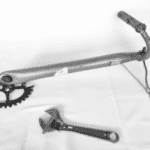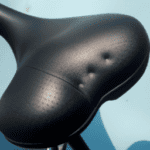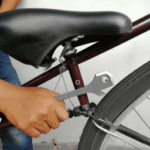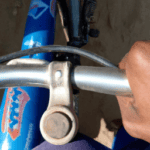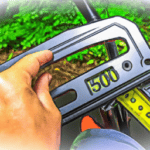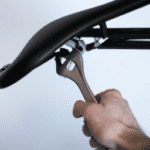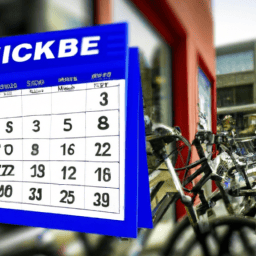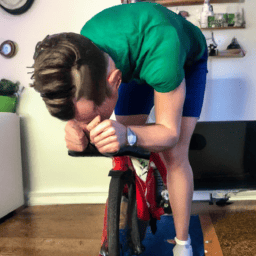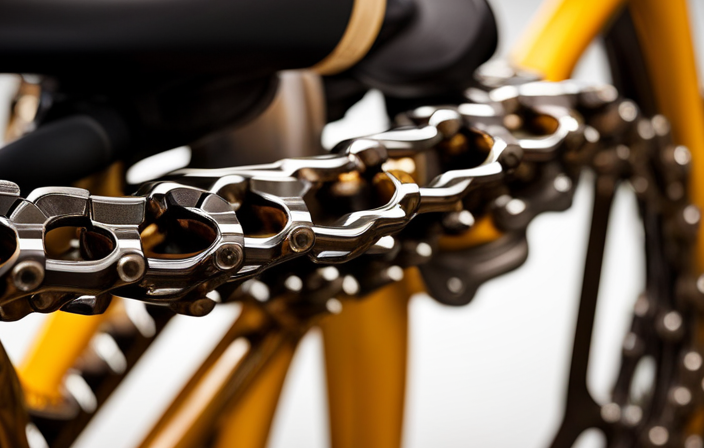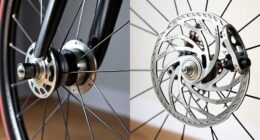Swapping out a bike saddle might appear intimidating at first, but there’s no need to worry! Armed with the appropriate tools and a little patience, it’s simple to exchange your tired, old saddle for a fresh one offering superior comfort and support. Take it from me, having changed numerous bike seats myself, I can vouch for the ease of the process that truly anyone can manage.
The benefits of replacing your bicycle seat are numerous. Not only will it make your ride more comfortable, but it can also help alleviate any pain or discomfort you may have experienced while cycling. Plus, a new seat can give your bike a fresh look and feel, making you excited to hit the road or trails once again.
So, let’s get started on the steps you need to take to replace your bicycle seat and enjoy a better, more comfortable ride.
Key Takeaways
- Choosing the right seat is important, consider type of cycling, padding, support, durability, and fit.
- Necessary tools for replacing a bicycle seat include a wrench/Allen key, new seatpost, grease, and screwdriver.
- Removal of the old seat requires loosening the seat clamp, remembering the previous height, and keeping track of washers/spacers.
- Installation involves aligning the new seat with the post, adjusting the height for optimal balance and comfort, and tightening the bolt securely.
Choose the Right Bicycle Seat
Before you start replacing your bicycle seat, make sure you’ve chosen the right one to ensure a comfortable ride. There are several factors to consider when selecting a new bicycle seat.
Firstly, you need to determine the type of cycling you’ll be doing. If you’re planning on doing long-distance rides, you’ll need a seat that provides enough padding and support. On the other hand, if you’re into mountain biking or off-road cycling, you’ll need a seat that’s more durable and can withstand rough terrain.
Secondly, finding the perfect fit is crucial. There are different seat widths, lengths, and shapes available, and it’s essential to choose one that fits your body type and riding style. A seat that’s too wide or too narrow can cause discomfort and pain, especially on longer rides. Additionally, the seat’s shape should match your riding posture to avoid any unnecessary pressure on sensitive areas.
With the right seat, you’ll be able to ride longer and more comfortably. Now that you’ve chosen the right bicycle seat, it’s time to gather the necessary tools.
Gather the Necessary Tools
Make sure you’ve got all the tools you need before starting. Here’s a list of the necessary tools you’ll need to replace your bicycle seat:
- Wrench or Allen key
- New seatpost (if needed)
- Grease
- Screwdriver (if needed)
These tools can be purchased at your local bike shop or online. However, if you’re looking for DIY alternatives, a wrench or pliers can be used instead of an Allen key.
Before starting, make sure your bike is stable and secure. Remove any accessories that may be in the way, such as a bike rack or saddlebag.
Now, let’s move on to removing the old bicycle seat.
Remove the Old Bicycle Seat
Now that I’ve gathered all the necessary tools, it’s time to remove the old bicycle seat.
The first step is to loosen the seat clamp, which holds the seat post in place.
Once the seat clamp is loose, I can easily remove the old seat from the seat post.
Loosen the Seat Clamp
To loosen the seat clamp, simply twist the lever counterclockwise until the seat can be moved up and down. This step is important because it allows you to adjust the height of your new seat to ensure proper alignment with your body.
Before loosening the clamp, make sure to remember the previous height of your old seat so you can adjust the new seat to a similar height.
Once the seat clamp is loosened, you can now remove the old seat. This can be done by lifting the seat off the clamp and sliding it out of the seat post.
Be sure to keep track of any washers or spacers that were used in the previous setup, as they may need to be repositioned when attaching the new seat.
Remove the Old Seat
First, you’ll need to release the seat clamp and lift the old seat out of its position, making sure you keep track of any washers or spacers that were previously used. This step is crucial to properly install the new seat.
Here are some tips to help you remove the old seat without any issues:
- Tools required: You’ll need a wrench or Allen key to loosen the seat clamp and remove the old seat.
- Common mistakes: One mistake people often make is forgetting to keep track of washers and spacers, which can lead to difficulties when installing the new seat. Another common mistake is not properly loosening the seat clamp, which can cause damage to the bike frame.
Once you’ve removed the old seat, you can move on to installing the new bicycle seat.
Install the New Bicycle Seat
Once you have removed the old seat, simply align the new seat with the post and tighten the bolt until it is secure. Before tightening the bolt completely, make sure the seat is adjusted to the proper height. Adjusting the height of the seat is important to ensure proper balance and comfort while riding. Finding the right comfort level may take a few attempts, so be sure to test ride the bike after making any adjustments.
To adjust the height of the new seat, loosen the bolt and slide the seat up or down on the post. Use the markings on the post to ensure the seat is at the desired height. Once the seat is at the proper height, tighten the bolt securely. It is important not to overtighten the bolt as this can damage the seat or post. Refer to the table below for a quick reference guide on adjusting the height and finding comfort for your new bicycle seat.
| Step | Action | Tips |
|---|---|---|
| 1 | Adjust height | Loosen the bolt and slide the seat up or down on the post. Use the markings on the post to ensure the seat is at the desired height |
| 2 | Find comfort | Test ride the bike after making any adjustments. Adjust the angle of the seat and tighten the bolt securely. Ensure the seat is level and comfortable for your ride. |
With the new seat securely installed and adjusted to the proper height and comfort level, it is time to test it out on the road.
Test Your New Bicycle Seat
Now that I’ve secured my new saddle, it’s time to take my bike for a spin to test out the comfort level and make any necessary adjustments. As I sit on the new seat, I feel the difference immediately.
The cushioning is firmer yet more supportive, and the shape contours to my body much better than the previous seat. The pressure points on my sit bones and perineum are relieved, and I can feel the increased stability as I pedal.
Comfort testing is essential to ensure that the seat is the right fit for my body and riding style. I adjust the angle of the seat to find the optimal position that provides the most comfort and stability.
I sit upright and lean forward to see how the seat performs in different riding positions. I also test the seat’s durability by riding over bumps and rough terrain.
After the comfort testing and adjustments are complete, I can confidently say that the new saddle has improved my riding experience and made my bike rides more enjoyable.
Frequently Asked Questions
How do I know if my current bicycle seat is the wrong size?
To determine if my bicycle seat is the wrong size, I use measuring techniques to check the distance between my sit bones. I also ensure proper seat height as it affects comfort and performance.
Can I use any type of saddle for my bike?
When choosing a saddle for my bike, I consider the importance of saddle width for comfort. It’s crucial to find the right fit to avoid discomfort and injuries. Any type of saddle won’t do – it needs to be the right one for me.
Is it necessary to use a torque wrench when installing a new bicycle seat?
Yes, it is necessary to use a torque wrench when installing a new bicycle seat. The benefits of using a torque wrench when working on bikes include ensuring proper tightness and avoiding damage to the seat or frame. Common mistakes to avoid when installing a new bicycle seat include over-tightening or under-tightening the bolts.
How often should I replace my bicycle seat?
Oh, the joy of replacing a bike seat! As for when to do it, consider the importance of proper positioning and the benefits of a higher quality seat. Technical precision is key.
Can I adjust the angle of my bicycle seat for a more comfortable ride?
Yes, adjusting the position and angle of a bicycle seat can greatly enhance comfort and performance. Proper alignment is crucial, so start by loosening the bolts securing the seat and adjusting it to your desired angle before tightening them back up.
Conclusion
In conclusion, replacing a bicycle seat is a simple task that can improve your biking experience. Choosing the right seat is crucial for your comfort and safety, so make sure it fits your body type and riding style. Additionally, gather the necessary tools beforehand to save time and frustration during installation.
Removing the old seat and installing the new one are straightforward steps that require attention to detail. Make sure to adjust the height and angle of the new seat to your liking and test it out before hitting the road. Remember, a well-fitted seat can prevent discomfort and injuries, so don’t overlook this important aspect of your bike setup.
As the saying goes, "a stitch in time saves nine,"and taking the time to replace your bicycle seat can save you from future discomfort and pain.


